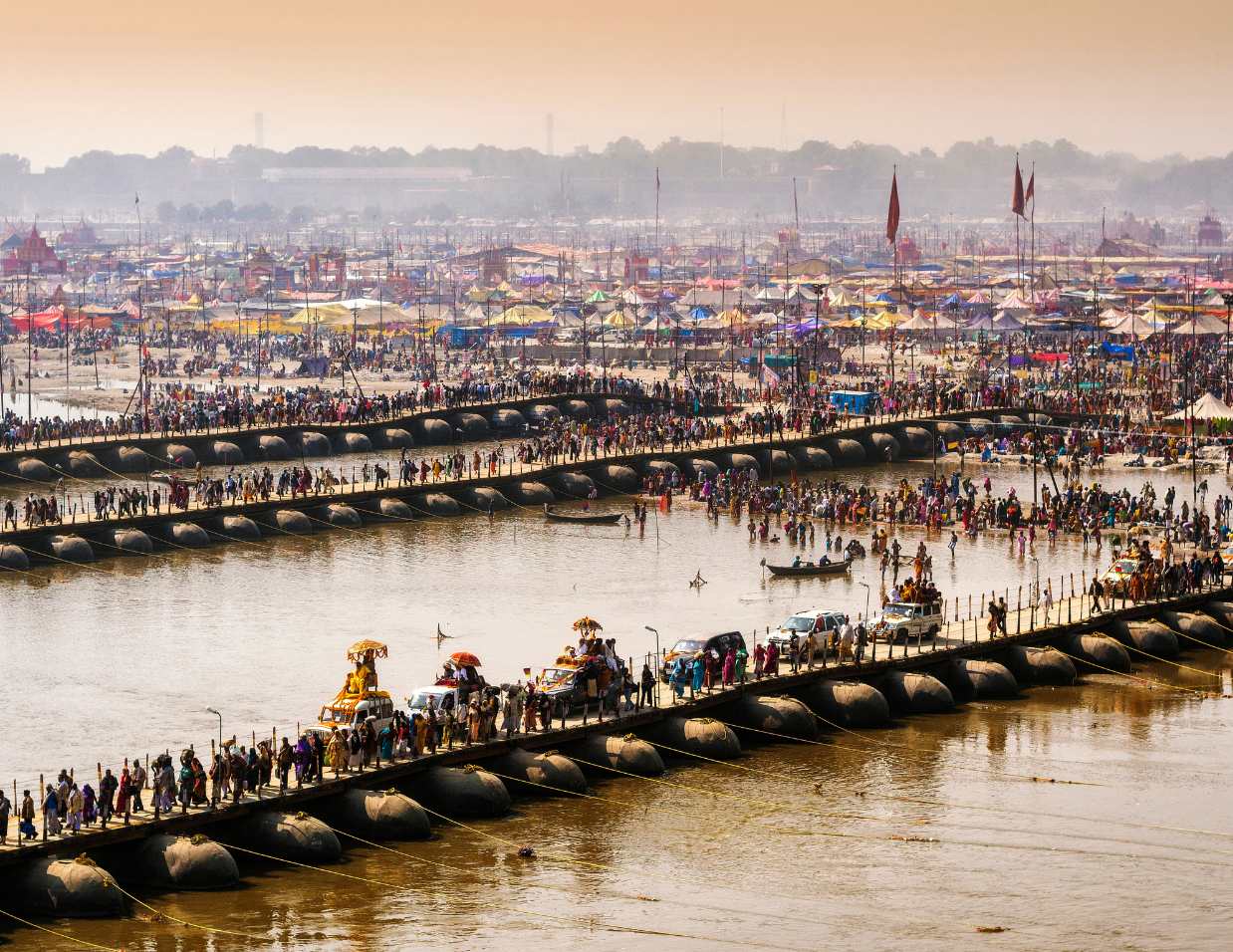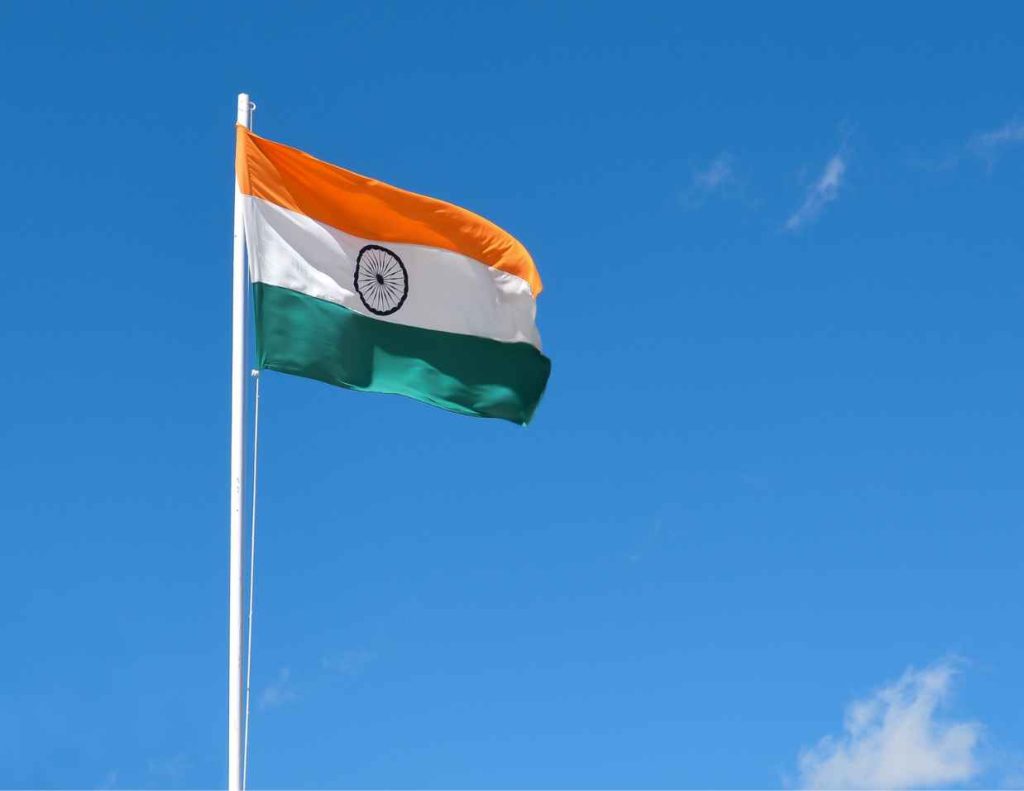Maha Kumbh Mela A Global Beacon of Hindu Dharma

The Maha Kumbh Mela in Prayagraj in India has become a shining global beacon of Hindu Dharma. Sanatana Dharma, which is often referred to as the Hindu Dharma also, is one of the world’s oldest spiritual traditions, has captivated people across the globe with its deep philosophy, rituals, and spiritual wisdom. Among the many sacred traditions of Hinduism, the Maha Kumbh Mela stands as the most grandiose, a spectacle that brings together millions of seekers, saints, and devotees. Held once every 12 years at four sacred locations—Prayagraj, Haridwar, Nashik, and Ujjain—this gathering is not just a religious congregation but a spiritual and cultural phenomenon that has made Hindu Dharma immensely attractive to people worldwide.
As the largest religious gathering in human history, the Maha Kumbh Mela has drawn the curiosity of people from all walks of life—spiritual seekers, scholars, historians, and even world leaders. But what is it about this festival that makes Hinduism so compelling and inviting to the world?
Kumbh Mela Is A Living Testament
Unlike many ancient religions that have faded or evolved beyond recognition, Hindu Dharma has remained continuous and deeply rooted in tradition for over 5,000 years. The Maha Kumbh Mela is a living proof of Hinduism’s resilience and eternal nature—where ancient rituals, unchanged for millennia, continue to attract millions of pilgrimsand growing numbers of international visitors.
At a time when modern societies face spiritual emptiness and declining faith in religious institutions, the Maha Kumbh Mela stands as a monument to the unbroken lineage of Hindu wisdom and practices, making it an inspiring event for those seeking deeper meaning in life.
The Power of Rituals and the Sacred Dip (Shahi Snan)
One of the most iconic aspects of the Kumbh Mela is the Shahi Snan (royal dip) in the sacred rivers, particularly the Ganga, Yamuna, Saraswati, Godavari, and Shipra. Hindu scriptures describe these rivers as divine embodiments of purity and liberation. It is believed that taking a dip in these waters during the Kumbh Mela washes away sins and grants moksha (liberation from the cycle of birth and death).
For many international visitors and seekers from the West, this concept of ritual purification and karma resonates deeply with their own spiritual quests. Many are drawn to experience the overwhelming devotion, faith, and transformative energy that radiates during the holy bath at sunrise. This profound spiritual energy and faith displayed at the Kumbh Mela serves as a unique attraction for non-Hindus exploring deeper spiritual experiences beyond conventional religion.
The Mystical Allure of the Naga Sadhus and Yogis
The Naga Sadhus—the revered ascetic warriors of Hindu Dharma—are among the greatest attractions of the Kumbh Mela. These monks, often seen naked, covered in ashes, and deeply immersed in meditation, symbolize renunciation, fearlessness, and spiritual mastery. Their presence captivates people worldwide who are fascinated by their tapasya (austerities), yogic discipline, and devotion to Shiva.
For many Western spiritual seekers, the Naga Sadhus represent the ultimate form of detachment and transcendence, a concept they often explore through meditation, yoga, and spiritual retreats. Visitors from across the world attend the Kumbh Mela just to witness these ascetics, interact with them, and understand their way of life.
Beyond the Naga Sadhus, the Kumbh Mela also serves as a meeting ground for various Akharas (spiritual organizations), where sages, yogis, and learned saints share knowledge about Vedanta, Yoga, Tantra, Ayurveda, and Hindu philosophy. This intellectual and spiritual vibrancy is a major attraction for seekers from the West, who often struggle to find such unbroken spiritual lineages in their own traditions.
Kumbh Mela Is A Festival of Unity in Diversity
The Maha Kumbh Mela is a symbol of the unity of Hindu Dharma, as it brings together different sects, sampradayas, and spiritual traditions under one sacred event. Whether it is the Shaivites (followers of Shiva), Vaishnavites (followers of Vishnu), Shaktas (worshippers of Devi), or Advaitins (non-dualists)—all come together in an extraordinary display of harmony and reverence for Dharma.
This inclusive and pluralistic approach is one of the key aspects that makes Hindu Dharma so attractive. Unlike dogmatic traditions, Hinduism embraces diverse paths to the Divine. The Kumbh Mela showcases how Hindu Dharma welcomes all seekers, whether they are monks or householders, scholars or common devotees, Indians or foreigners.
This spirit of inclusivity has encouraged many non-Hindus to explore and adopt Hindu philosophies, such as Bhakti Yoga, Karma Yoga, Vedanta, and meditation practices, making the Kumbh Mela an open door to the world.
The Influence of Global Media and Celebrity Seekers
In recent years, the globalization of spirituality and the presence of international media at the Kumbh Mela have further popularized Hindu Dharma worldwide. Major international news networks like BBC, National Geographic, and CNN regularly cover the Maha Kumbh Mela, documenting its mysticism, grandeur, and spiritual depth.
Additionally, many prominent global figures—including spiritual leaders, authors, and celebrities—have attended the Kumbh Mela and shared their experiences with the world. Their testimonials often highlight:
- The transformative power of Hindu rituals.
- The profound wisdom in Hindu scriptures.
- The spiritual and yogic traditions that offer peace and enlightenment.
Figures like Sadhguru, Swami Vivekananda (in earlier years), Deepak Chopra, and many international yogis have contributed to making Hindu Dharma and Kumbh Mela a magnet for global seekers.
The Role of Yoga and Ayurveda in Attracting the World
The popularity of Yoga and Ayurveda in the modern world has played a significant role in drawing people to the Kumbh Mela. Many attendees visit the festival not just for religious devotion but also to:
- Attend spiritual discourses on yoga and meditation.
- Learn about Ayurvedic healing, natural remedies, and Vedic wisdom.
- Experience the spiritual lifestyle practiced by saints and yogis.
Yoga practitioners from the United States, Europe, and Japan flock to the Kumbh Mela to deepen their knowledge and to understand the authentic roots of yogic philosophy from the traditional masters.
The Kumbh Mela as a Universal Call to Spiritual Awakening
The Maha Kumbh Mela is not just a religious festival—it is a global spiritual pilgrimage, a testament to the timeless wisdom of Hindu Dharma. It presents an opportunity for millions—Hindus and non-Hindus alike—to experience divine consciousness, purification, and enlightenment.
By combining spirituality, tradition, philosophy, rituals, and inclusivity, the Kumbh Mela has successfully positioned Hindu Dharma as one of the most attractive, relevant, and transformative spiritual traditions in the modern world.
As the world grapples with existential crises, mental health challenges, and the search for meaning, Hindu Dharma—through the Maha Kumbh Mela—offers a pathway to peace, knowledge, and liberation, drawing millions towards its sacred embrace.
